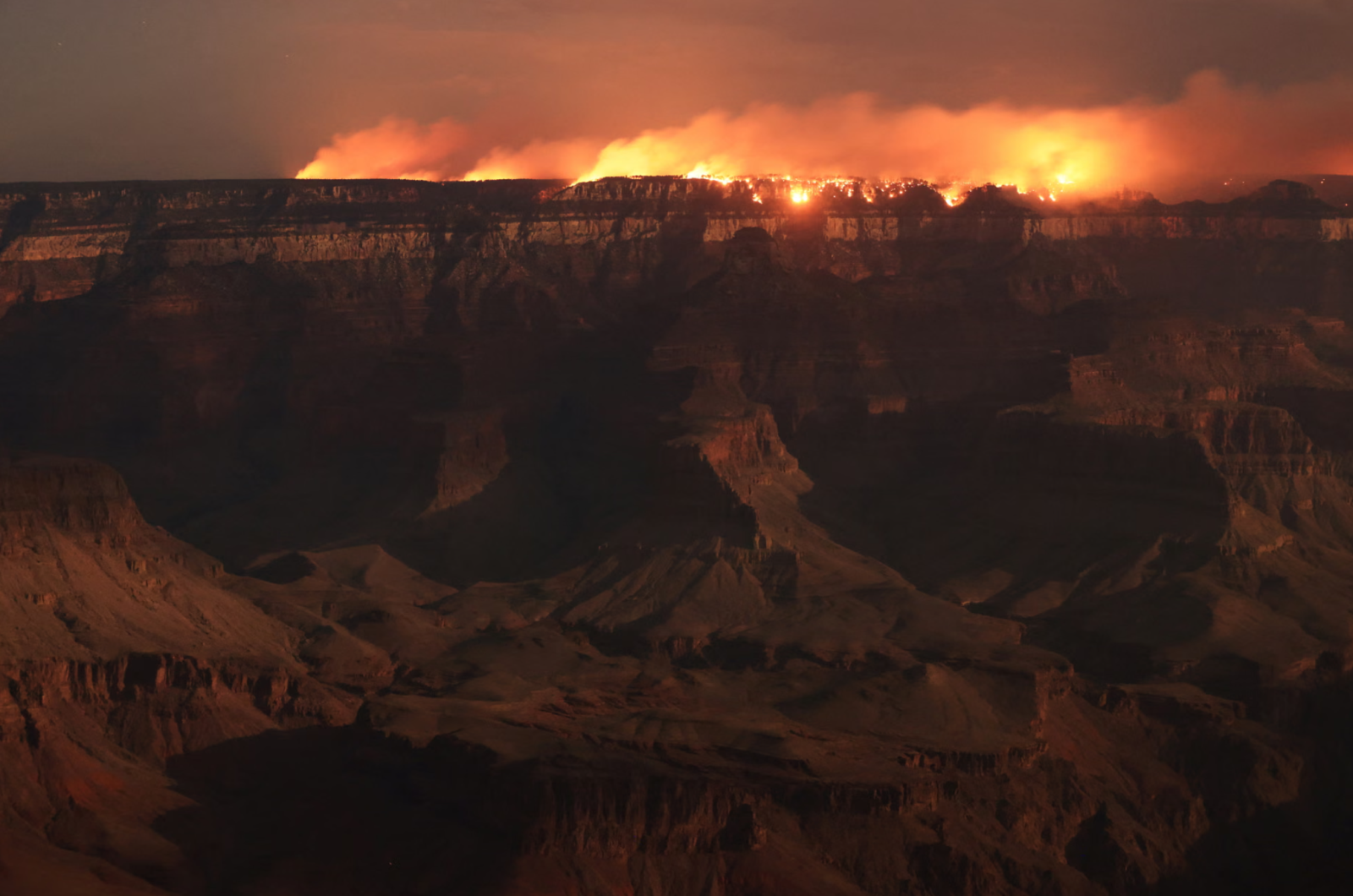
Grand Canyon Megafire Becomes Largest in Continental US
The Dragon Bravo Fire, burning along the North Rim of the Grand Canyon, has grown into the largest active wildfire in the continental United States. It has torched over 164 square miles (424 sq km) of forest since it was sparked by lightning on 4 July, now ranking among the top 10 largest fires in Arizona history.
Once managed to promote forest health, the fire has since spiraled out of control due to worsening weather conditions, destroying the Grand Canyon Lodge and surrounding historic cabins. The North Rim of the park has been closed for the remainder of the season, and hundreds of firefighters are now focused on containment and protection of surrounding areas.
The blaze is currently only 9% contained, with gusting winds, parched vegetation, and critically low humidity levels making the fire increasingly unpredictable. Fire behavior analysts report that pyrocumulus clouds—towering smoke clouds that act like thunderstorms—have developed over the fire for eight consecutive days, reaching heights over 25,000 feet (7,620 meters).
‘Fire-Breathing' Clouds Worsen Utah Wildfire Threat
In south-central Utah, the Monroe Canyon Fire has burned approximately 75 square miles (194 sq km) since igniting on 13 July, and is only 11% contained. The fire has prompted evacuation orders across multiple communities, and Utah Governor Spencer Cox declared a state of emergency on Thursday.
Authorities are particularly alarmed by the formation of pyrocumulonimbus clouds—volatile, storm-like clouds that develop from intense heat and smoke. When these clouds collapse, they can unleash powerful downdrafts that scatter embers and drive fires in unpredictable directions. Such conditions recently forced firefighting crews in Utah to withdraw for safety, as winds whipped up to 35 mph.
NASA has referred to these massive formations as the "fire-breathing dragons of clouds," capable of creating fire tornadoes and hurricane-strength wind events. One such fire tornado recently tore through an eastern Utah neighborhood with estimated wind speeds exceeding 120 mph.
Atmospheric scientist Derek Mallia, who studies wildfire-related weather at the University of Utah, explained that these towering clouds mirror thunderstorms in structure but are often bone dry—a dangerous combination. "They're becoming more common with longer fire seasons and a hotter, drier climate," he said.
Communities in Crisis: Power Outages and Evacuations
The fires have already destroyed at least 12 power poles in Utah, leaving towns like Antimony, located about 54 miles south of Monroe, completely without power. Mayor Kasey King said residents are preparing for a week without electricity, relying on generators and community support.
In Richfield, about 10 miles north, residents are bracing for possible evacuation. Lee Stevens, a local resident, described a layer of ash coating his home. His wife, who suffers from asthma, is struggling with the thick smoke that blankets the area.
Local resident Marnie Reynolds is using her camp stove to cook hot meals for neighbors and has opened her generator-powered refrigerator to others storing food and medicine. "We've been through a lot, but this community looks after each other," she said.
Rising Threats Across the Western US
Despite burning fewer acres nationwide so far this year than the recent average, the National Interagency Fire Center warns that large swaths of the western US remain highly vulnerable to new fires due to widespread drought and extreme weather. Red flag warnings for extreme fire danger are in effect across much of central and southwest Utah.
Both the Dragon Bravo and Monroe Canyon fires are examples of how climate change, coupled with overgrown forests and decades of fire suppression, are creating larger, more intense, and less predictable wildfires than in the past. And with peak fire season still ahead, officials say they are preparing for further escalation.